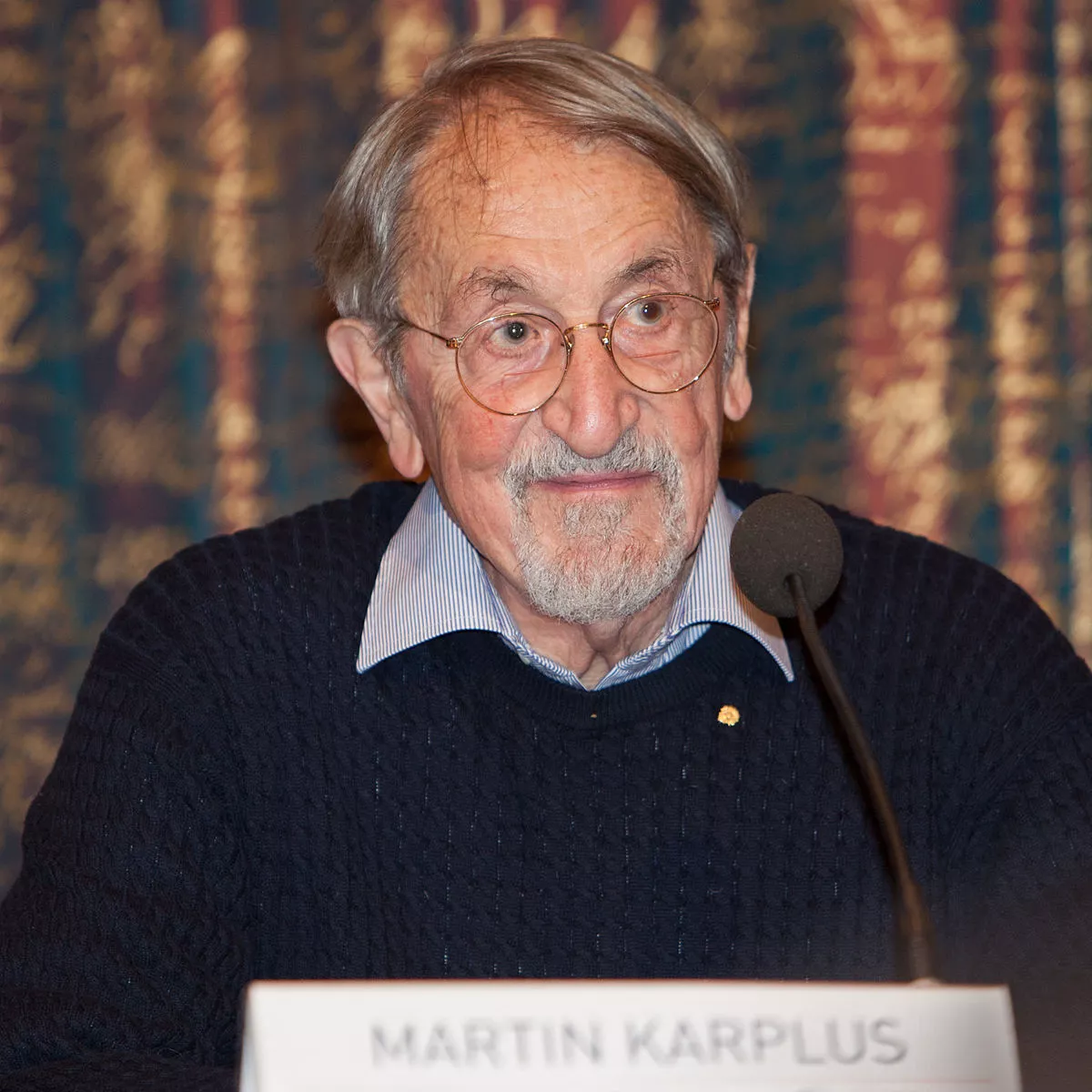 1.
1. Martin Karplus was the Theodore William Richards Professor of Chemistry at Harvard University.

 1.
1. Martin Karplus was the Theodore William Richards Professor of Chemistry at Harvard University.
Martin Karplus was the director of the Biophysical Chemistry Laboratory, a joint laboratory between the French National Center for Scientific Research and the University of Strasbourg, France.
Martin Karplus was born on March 15,1930, in Vienna, Austria.
Martin Karplus was a child when his family fled from the Nazi-occupation in Austria a few days after the Anschluss in March 1938, spending several months in Zurich, Switzerland and La Baule, France before immigrating to the United States.
Martin Karplus's grandfather, Johann Paul Karplus was a highly acclaimed professor of psychiatry at the University of Vienna.
Martin Karplus's great-aunt, Eugenie Goldstern, was an ethnologist who was killed during the Holocaust.
Martin Karplus was the nephew, by marriage, of the sociologist, philosopher and musicologist Theodor W Adorno and grandnephew of the physicist Robert von Lieben.
Martin Karplus's brother, Robert Karplus, was an internationally recognized physicist and educator at University of California, Berkeley.
Martin Karplus completed his PhD in 1953 under Nobel laureate Linus Pauling.
Martin Karplus was a professor at the Louis Pasteur University in 1996 where he established a research group in Strasbourg, France, after two sabbatical visits between 1992 and 1995 in the NMR laboratory of Jean-Francois Lefevre.
Martin Karplus has supervised more than 200 graduate students and postdoctoral researchers over his career since 1955.
Martin Karplus died at his home in Cambridge, Massachusetts, on December 28,2024, at the age of 94.
Martin Karplus published his first academic paper when he was 17 years old.
Martin Karplus contributed to many fields in physical chemistry, including chemical dynamics, quantum chemistry, and most notably, molecular dynamics simulations of biological macromolecules.
Martin Karplus has been influential in nuclear magnetic resonance spectroscopy, particularly to the understanding of nuclear spin-spin coupling and electron spin resonance spectroscopy.
The Martin Karplus equation describing the correlation between coupling constants and dihedral angles in proton nuclear magnetic resonance spectroscopy is named after him.
From 1969 to 1970, Martin Karplus visited the Structural Studies Division at the MRC Laboratory of Molecular Biology.
Martin Karplus's research was concerned primarily with the properties of molecules of biological interest.
Martin Karplus's group originated and coordinated the development of the CHARMM program for molecular dynamics simulations.
Martin Karplus was elected a member of the National Academy of Sciences in 1967.
Martin Karplus was awarded the Irving Langmuir Award in 1987.
Martin Karplus is a member of the International Academy of Quantum Molecular Science.
Martin Karplus became foreign member of the Royal Netherlands Academy of Arts and Sciences in 1991 and was elected a Foreign Member of the Royal Society in 2000.
Martin Karplus is a recipient of the Christian B Anfinsen Award, given in 2001.
Martin Karplus was awarded the Linus Pauling Award in 2004 and the Nobel Prize in Chemistry in 2013.